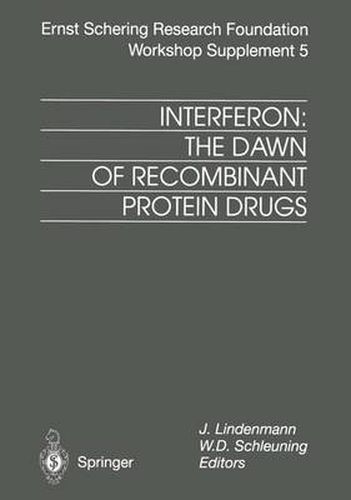Readings Newsletter
Become a Readings Member to make your shopping experience even easier.
Sign in or sign up for free!
You’re not far away from qualifying for FREE standard shipping within Australia
You’ve qualified for FREE standard shipping within Australia
The cart is loading…






This title is printed to order. This book may have been self-published. If so, we cannot guarantee the quality of the content. In the main most books will have gone through the editing process however some may not. We therefore suggest that you be aware of this before ordering this book. If in doubt check either the author or publisher’s details as we are unable to accept any returns unless they are faulty. Please contact us if you have any questions.
Forty years of Interferon I wish to dedicate this short introduction to the memory of Alick Isaacs (1921-1967), and to that of Sir Christopher Andrewes (1896-1988). Let us go back more than 40 years. In 1956 Isaacs was in charge of the Wodd Influenza Centre. Andrewes was head of the division of bac teriology and virology, and deputy director of the National Institute for Medical Research in London. When researchers are faced with a seemingly new phenomenon, ex planations are easy to come by. These explanations fall into two broad categories: the phenomenon in question is either due to something or to the lack of something. I apologize for the primitive way in which I ex press this, but I am going to give three examples, scattered over 100 years, of what I mean. First example: in 1880 the great French microbiologist Louis Pas teur was involved in work on chicken cholera. He was struck by the following observation: if a suitable chicken broth was inoculated with the bacterium, the organism grew profusely and the liquid became tur bid. If he now freed the fluid, by sedimentation or filtration, from the bulk of the organisms and re-inoculated it with the same bacterium, no growth occurred.
$9.00 standard shipping within Australia
FREE standard shipping within Australia for orders over $100.00
Express & International shipping calculated at checkout
This title is printed to order. This book may have been self-published. If so, we cannot guarantee the quality of the content. In the main most books will have gone through the editing process however some may not. We therefore suggest that you be aware of this before ordering this book. If in doubt check either the author or publisher’s details as we are unable to accept any returns unless they are faulty. Please contact us if you have any questions.
Forty years of Interferon I wish to dedicate this short introduction to the memory of Alick Isaacs (1921-1967), and to that of Sir Christopher Andrewes (1896-1988). Let us go back more than 40 years. In 1956 Isaacs was in charge of the Wodd Influenza Centre. Andrewes was head of the division of bac teriology and virology, and deputy director of the National Institute for Medical Research in London. When researchers are faced with a seemingly new phenomenon, ex planations are easy to come by. These explanations fall into two broad categories: the phenomenon in question is either due to something or to the lack of something. I apologize for the primitive way in which I ex press this, but I am going to give three examples, scattered over 100 years, of what I mean. First example: in 1880 the great French microbiologist Louis Pas teur was involved in work on chicken cholera. He was struck by the following observation: if a suitable chicken broth was inoculated with the bacterium, the organism grew profusely and the liquid became tur bid. If he now freed the fluid, by sedimentation or filtration, from the bulk of the organisms and re-inoculated it with the same bacterium, no growth occurred.